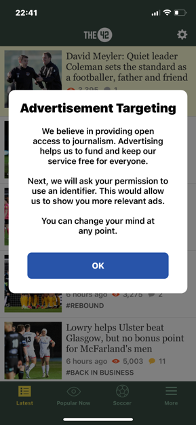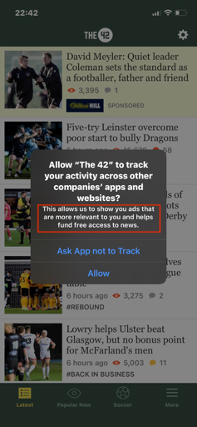Intentional vs Coincidental: How Content Publishers Should Handle the iOS14 ATT Update
App publishers with premium content have an intentional relationship with their users.
Users put the app on their home screen, and they intentionally access it to consume content. That type of direct communication gives publishers a deeper relationship with their audience.
For premium publishers this often turns out to be a stronger asset versus their websites, which can be heavily leveraged by Google AMP and Apple News intermediating the relationship.
In early spring, Apple will release iOS 14, and the AppTrackingTransparency (ATT) framework along with it. This framework requires publishers to ask for user permission to track across devices and access advertising identifiers. This is when those deep relationships will prove their value.
Here is what to do.
Publishers should leverage the relationship equity given through their intentional relationship with users to:
Provide users context
Explaining the upcoming request, why it’s important for you as a publisher and why it’s safe to opt in as a user…before serving them with the official ATT pop-up.

Example of a pre-ATT pop-up customized to provide the user with context.
Customize the standard ATT message
Apple provides publishers with the ability to edit part of the standard ATT message. Once you’ve provided prior context to the user, be sure to pay it off in the official ATT pop-up by using compelling copy.
Examples of customization might include:
“Fund free access to news by choosing Allow”

Example of an ATT pop-up with customization.
Why is ATT important?
Access to users’ IDFA is a key factor in ad revenue and analytics from iOS devices. The more targeted the impression, the more an advertiser will pay. With IDFA opt-in rates estimated anywhere between 10%-60%, the potential for short and mid-term revenue loss is substantial.
But, content publishers have the upper hand compared to other types of apps. They have a direct and intentional relationship with their users. Users add their apps to their home screens and purposefully access the app to consume content.
An evolution to new targeting, tracking, and analytic models are underway in the industry. But for right now smart publishers with intentional user relationships can leverage some of the relationship equity now to encourage opt-ins and experience a smoother transition.


